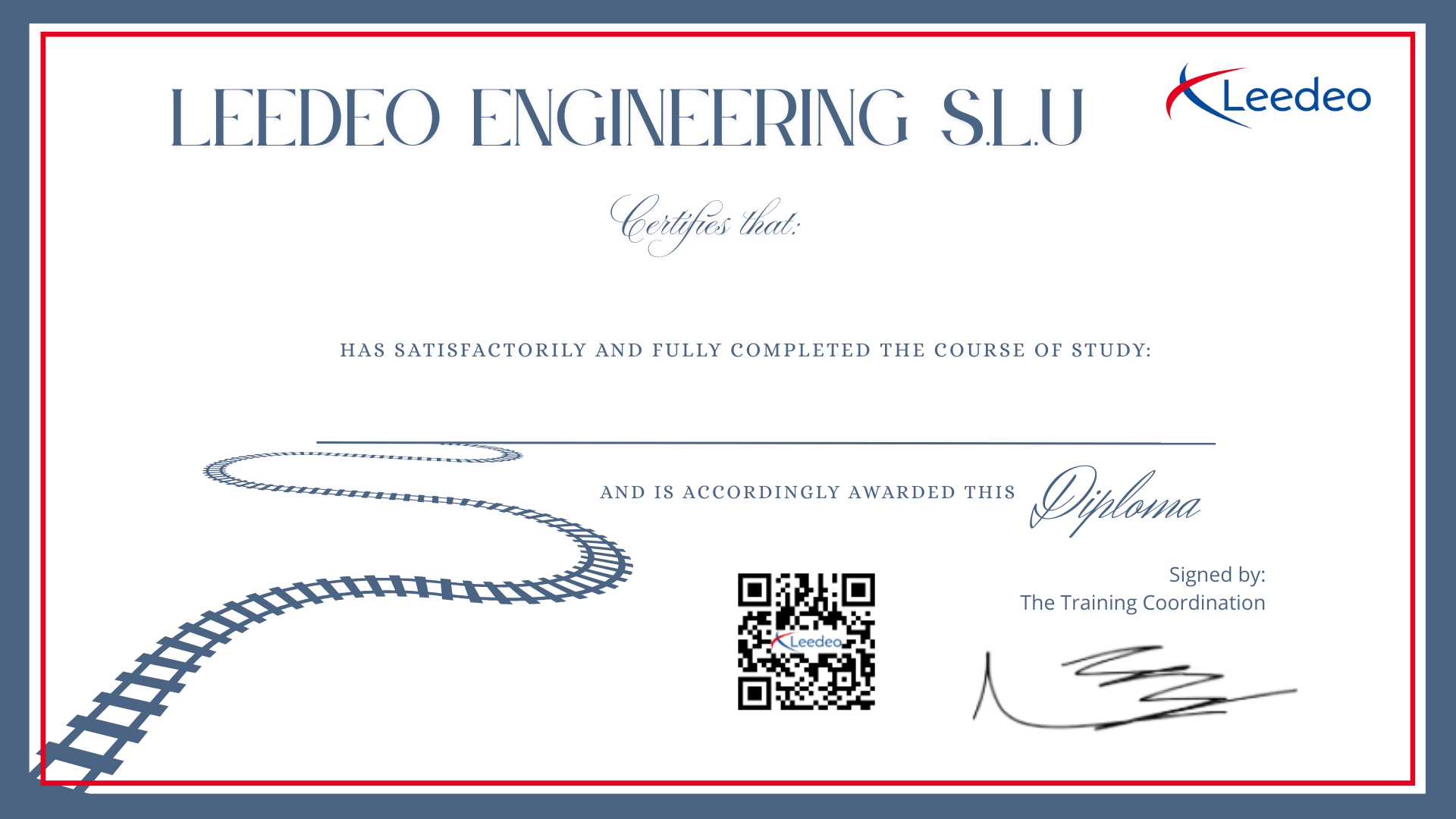Introduction to RAMS Engineering
¿For whom is it intended?
- Technical professionals who want to acquire a high level of knowledge about RAMS Engineering, starting from scratch.
- Final year students or recent graduates aiming to orientate their career towards the railway sector and RAMS, without having prior knowledge in the sector.
- Engineers with initial orientation, projection, or experience in railway sector.
- Experienced professionals in railway industry or related sectors who want to acquire extensive knowledge of RAMS Engineering as a starting point.
Course objetives
- To know what a RAMS plan is, plus RAMS Management being associated to a railway project.
- Learning to use Fault Tree Analysis (FTA)/ Failure Mode, Effects, and Criticality Analysis (FMECA) tools.
- Correctly managing and dealing with failure modes of a product, system, or installation.
- Properly managing and addressing threats and risks: Developing a Preliminary Hazard Analysis (PHA) and a Hazard Log.
- Understanding Safety Integrity Level (SIL).
- Defining and understanding needs, properties, characteristics, and types of maintenance.
- Defining and understanding the human factor.
- To know, apply and calculate reliability, availability, maintainability and safety of a product, system, or installation.
- To understand exactly what RAMS Engineering is and what it is for, and also why it is becoming increasingly important in sectors such as transport.
- To know the beginnings of RAMS Engineering. Where it started and how it ended up in different sectors and industries.
Course Content
- Chapter 0. Course introduction
- Chapter 1. Introduction to RAMS Engineering. History and penetration in railway industry
- Chapter 2. Key concepts: Reliability, availability, maintainability, and safety. Theory of failure, Mean Time Between Failures (MTBF), maintenance, SIL level and Human Factor
- Chapter 3. Threat and risk management: Preliminary Hazard Analysis (PHA) and Hazard Log
- Chapter 4. Application of RAMS techniques: Failure Mode, Effects, and Criticality Analysis (FMECA) and Fault Tree Analysis (FTA)
- Chapter 5. RAMS management in a railway project: EN50126, V-model, Project Management.
Keywords of the Introduction to RAMS Railway Engineering Course
reliability, reliability, availability, maintainability, safety, fail-safe, CENELEC EN 50126, EN 50128, EN 50129, EN 50159, SIL-4, human factor, Hazard Log, PHA, FMECA, FTA, Reliability Centered Maintenance, SRACs (Safety Related Application Conditions), Exported Risks, RAMS Plan, MTBF, MTTF, MDT, Critical Security Software, Military Handbook, MIL-HDBK, OPEX, CAPEX, natural catastrophes, Santiago accident, disruptive technologies, Quality, Preventive Maintenance, Corrective Maintenance, Validation, Verification, V&V, Risks, Threats, Dangers, Accident, Railway Signaling, Rolling Stock, THR, IEC61508, V-model, Life cycle, systematic failure, random failure, failure tree.
Training contents and student interface
Each chapter of the Introduction Course in RAMS Engineering is organised
in the same way:
- Main document where core contents of the chapter are presented and explained. A theoretical part will be set out, as well as a large number of examples and graphic-intensive practical cases.
- Complementary documentation in order to reinforce concepts of the chapter, usually in multimedia format, such as: videos, articles, technical specifications, regulations, etc.
- Step-by-step video examples and templates for real RAMS analysis
The students will have access to the course via platform Google Classroom. Such platform is easy, fast, and convenient. Applications for Smartphone and Tablet are included, allowing you to access training contents from anywhere, at any time and from any device.. Read more >>
Methodology and format
- Blended learning methodology: 50% knowledge | 50% know-how (you can read more here). Read more >>
- Online mode.
- The call is continuously open. No registration dates. During the 24 hours following payment for the master's course, your training can begin.
- Price: 399 Euros.
- Tutored course with a forum for consulting the teacher.
- Temporary load: 10 weeks.
- Evaluation test for each chapter (without time-limitation, one-time test).
Degree
Each chapter has an evaluation test as proof of knowledge consolidation. Optionally, you have up to 6 months to carry those tests out and you can take them at any time.
Once all the tests have been passed, your Course Certification/ Diploma will be issued by email.

Registration: always open
Once enrolled in the Master, in less than 24 hours you will receive by email a code and instructions to access the online training platform Google Classrrom. You will have full support from our Computer Systems Administration team in case of any technical problem.
¿Doubts?
- Contact us by email, phone or whatsapp. Contact us >>
- FAQs ¿Doubts? >>
Keywords of the Introduction to RAMS Railway Engineering Course
reliability, reliability, availability, maintainability, safety, fail-safe, CENELEC EN 50126, EN 50128, EN 50129, EN 50159, SIL-4, human factor, Hazard Log, PHA, FMECA, FTA, Reliability Centered Maintenance, SRACs (Safety Related Application Conditions), Exported Risks, RAMS Plan, MTBF, MTTF, MDT, Critical Security Software, Military Handbook, MIL-HDBK, OPEX, CAPEX, natural catastrophes, Santiago accident, disruptive technologies, Quality, Preventive Maintenance, Corrective Maintenance, Validation, Verification, V&V, Risks, Threats, Dangers, Accident, Railway Signaling, Rolling Stock, THR, IEC61508, V-model, Life cycle, systematic failure, random failure, failure tree.



